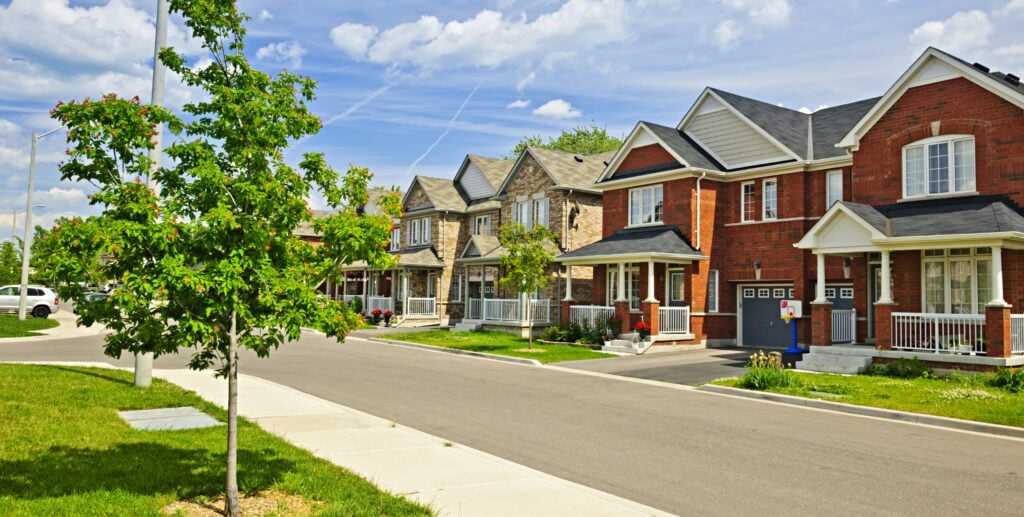Optimism is high across Australia for a July cash rate cut, and the construction industry is no exception.
The Reserve Bank of Australia (RBA) has already announced two rate cuts in 2025, bringing the rate down to 3.85% - the lowest level in two years.
As the RBA prepares to announce its next decision on Tuesday, 9 July, all four major Australian banks anticipate another cut.
Mortgage holders are understandably hopeful, and potential buyers are anticipating how this could increase their serviceability.
With the country facing a housing supply shortage, the question also remains of how many interest rate cuts are necessary to make a meaningful difference to the development industry in order to increase the number of new projects getting off the ground.
With another rate cut expected, developers are optimistic for further construction activity. Picture: Getty
Analysis from the Housing Industry Association (HIA) shows that new house approvals were 1.1% higher in the three months to May, which it attributed to the two interest rate cuts we’ve seen so far.
“Building approvals have followed other leading indicators to show that new home buyers are increasingly returning to the market,” HIA senior economist Tom Devitt said.
“With two interest rate cuts in the back pocket, and further cuts expected, more buyers are able to sign that contract for a new home build.”
Renewed buyer confidence
Recent research from HIA also suggests that buyer sentiment in the new homes market has already increased off the back of the two rate cuts delivered so far. The HIA New Home Sales report for May found sales increased by 6.9% - the highest level in 13 months.
By surveying major builders in five states each month, the report provides insights into home building trends.
REA Group senior economist Anne Flaherty said development activity could get a boost with another rate cut.
“It’s normally a positive for development activity when we see interest rates come down so that is good and hopefully it will be a boost to the sector,” Ms Flaherty said.
“But I think the sector remains challenged by cost by square metre of building at the moment, even though the rate at which building costs have increased have stabilised at a very high level.”
Experts say the house and land sector could see development boosts. Picture: Getty
Metricon, one of Australia's largest builders, said that any increase in buyer confidence amid cost-of-living pressures is beneficial for the development sector.
“Any action that boosts buyer confidence is a positive for the housing sector, and we are starting to see a shift in sentiment,” CEO Brad Duggan told realestate.com.au.
“However, increased demand alone is not a silver bullet. If anything, it’s likely to highlight the wider issues that continue to plague the industry that need urgent reform.”
Mr Duggan said rate cuts are only one part of the solution when it comes to restoring buyer confidence.
“To truly drive action and get people building again, we need to restore customer confidence in the entire building journey, and that means addressing wider industry challenges – reducing planning and approval delays, increasing investment in infrastructure and land supply and working to expand the trade workforce to improve build times,” he said.
According to Mr Duggan, leads have remained strong following previous rate cuts with the company seeing increased enquiries and more attendance in display homes.
“Buyer confidence seems to be increasing with each cut, and a third could be the tipping point that converts more interest into action,” he said.
Mirvac, one of Australia's largest property groups, has also seen increased momentum among buyer interest.
"Since the start of rate cuts in 2025, we continue to see positive sales momentum across our residential projects," CEO - development Stuart Penklis said.
"This increase is supported by lower interest rates, improving buyer sentiment, continued population growth, and restricted supply."
Affordability hurdles
While apartment approvals saw a large increase in May, especially in New South Wales, the high cost of building could pose a continuing challenge for the housing type.
Ms Flaherty said following recent cuts, the house and land space has continued to see more development activity, but the apartment space could struggle.
Apartments remain challenged by the cost of building, according to experts. Picture: Getty
“The kinds of apartments that are being developed at the moment are your premium high-end apartment,” she said.
“We’re really not seeing anywhere close to enough development happen close to that more affordable apartment space so that’s definitely a consideration.”
While houses have historically outperformed units in price, recent data from PropTrack shows unit prices grow on par with houses.
Ms Flaherty said this could continue in suburbs where units and apartments are below $700,000 due to the lack of apartments being built at that price point.
“Over a third of new apartment developments are priced above one million dollars but only around 10% of enquiries are at that level,” she said.
“The majority of new apartment development enquiries are still at the sub- $400,000 level, so there’s a massive imbalance between the price point at which people are looking to buy apartments and the price at which new apartments are being built.
“There’s going to have to be a correction in the price of the established market for apartments. Once we start to see those apartment prices rise, that might help to improve the feasibility of those other apartment development projects because at the moment it’s that high-end that’s being built.”
Are you interested in the latest in buying and building new? Check out our New Homes section.



















 English (US) ·
English (US) ·